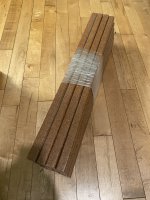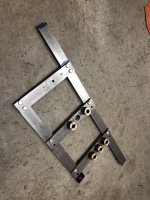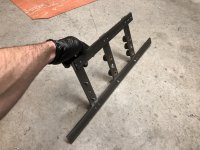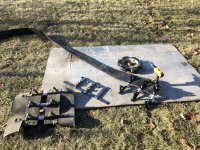Well, I made it home with the Kristi. Wife laughed and said Something about Dr Suess. She will thank me when she not pulling on the starter for the snowmobile we currently use to access our cabin…maybe. Good news first…she starts and runs great. I played with her a bit today and I think I’ve figured out the gears/leveling. The fore/aft adjustment isn’t as simple, but I’ll manage with some time. Trailer pulled very nice, though I question the origination. Seller stated that it was Kristi supplied…it has no markings to indicate that it was manufactured by Kristi. It’s manufactured by Atwood. Did Kristi ever build their own trailers?
Seems to have a parasitic electrical draw. Was bone dead after 2 days on the trailer. Can’t be much to trace down, just have to find my multimeter…
First thing will be track rebuild. I plan to follow BigAl’s instructions with the HDPE grousers and new belting. Where to start…I’ve been reading and, I should take notes, but I haven’t.
BigAl mentions the inner/outer belts being “floppy” for better control, a design he said he did not return to. Mine has that configuration. Has there been any consensus on whether the original “floppy” configuration is good or if I should abandon the 1960s design?
Next question; why the difference in connectors on inner and outer belting? Wouldn’t it just be better to change all belts to the flexco fasteners of the inner belts? The alligator lacing seems kind of flimsy, though I suppose the shared load over each section isn’t beyond reason.
3-ply/5-ply? Mine currently has three sections per side…is that usual? The belting on the inner/outer belts is different thickness. Should they all be the same or is there rationale for the variation?
Here’s what I’ve found on the HDPE 2x2…good/bad, look elsewhere?
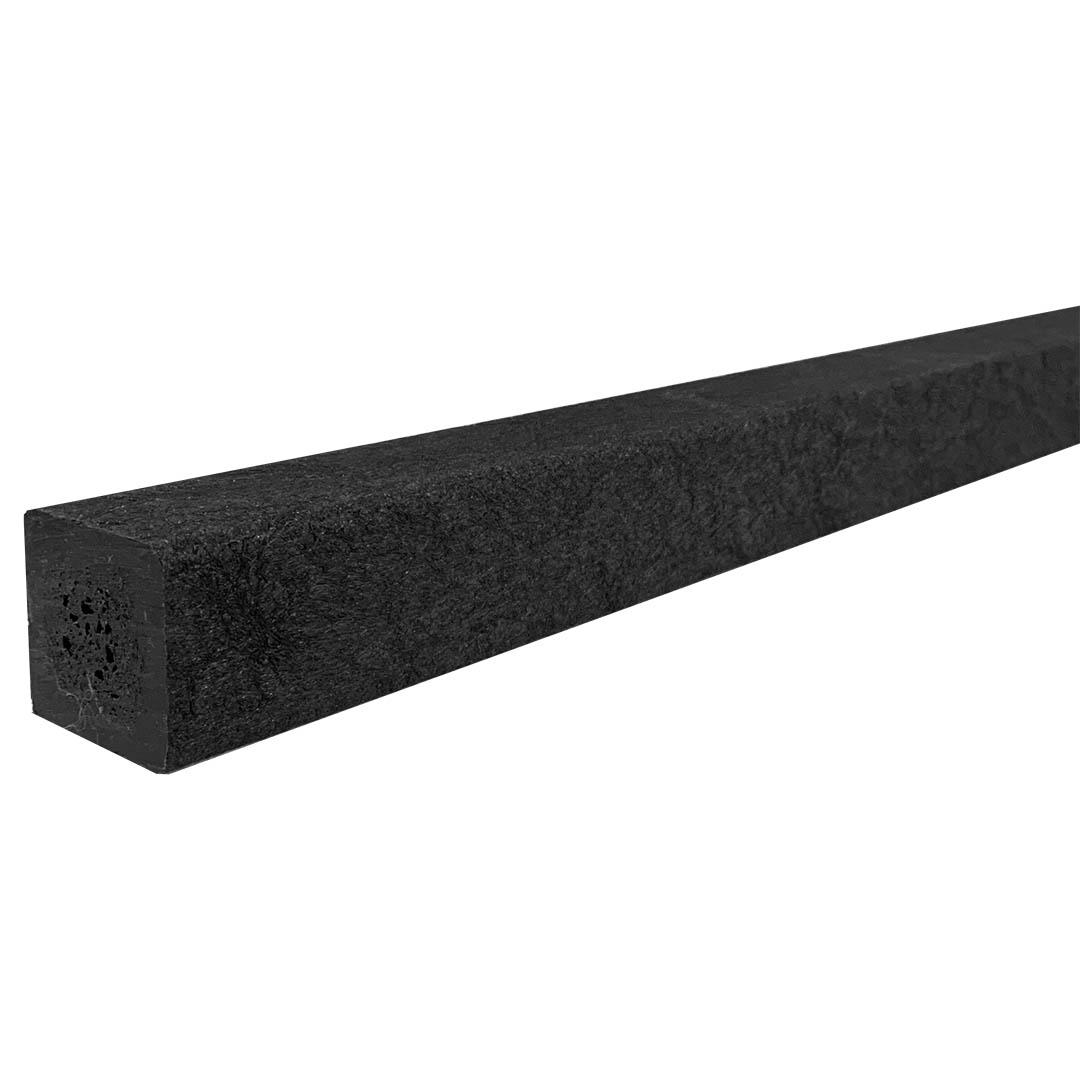
 plasticlumberyard.com
plasticlumberyard.com
Bad news at the end; nothing really, just looking at this cat and wondering what I’ve gotten myself into. Clearly, it would have been cheaper to just buy a restored, newer machine, but not nearly as fun or cool. I seem to have a habit of doing this…
Seems to have a parasitic electrical draw. Was bone dead after 2 days on the trailer. Can’t be much to trace down, just have to find my multimeter…
First thing will be track rebuild. I plan to follow BigAl’s instructions with the HDPE grousers and new belting. Where to start…I’ve been reading and, I should take notes, but I haven’t.
BigAl mentions the inner/outer belts being “floppy” for better control, a design he said he did not return to. Mine has that configuration. Has there been any consensus on whether the original “floppy” configuration is good or if I should abandon the 1960s design?
Next question; why the difference in connectors on inner and outer belting? Wouldn’t it just be better to change all belts to the flexco fasteners of the inner belts? The alligator lacing seems kind of flimsy, though I suppose the shared load over each section isn’t beyond reason.
3-ply/5-ply? Mine currently has three sections per side…is that usual? The belting on the inner/outer belts is different thickness. Should they all be the same or is there rationale for the variation?
Here’s what I’ve found on the HDPE 2x2…good/bad, look elsewhere?

STRUCTURAL 2 in x 2 in x 8 ft (Actual Dimensions 1-1/2 in x 1-1/2 in)
Actual Size: 1 1/2 in x 1 1/2 in Weight Per Ft.: 1 Height: 2 in Width: 2 in Length: 8 ft Color: Black, Blue, Brown, Cedar, Forest Green, Gray, Industrial Dark Gray, Mink, Spice, Tan, Weathered Wood, White, Yellow
 plasticlumberyard.com
plasticlumberyard.com
Bad news at the end; nothing really, just looking at this cat and wondering what I’ve gotten myself into. Clearly, it would have been cheaper to just buy a restored, newer machine, but not nearly as fun or cool. I seem to have a habit of doing this…



